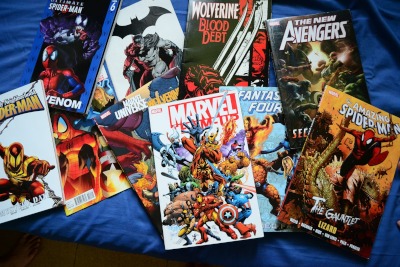Today we are going to talk about superheroes! I hope that you enjoy superheroes stories, but even if you are not a fan of Marvel and DC Universes, maybe you will find some new interesting characters in this article.
As a matter of fact superheroes have existed since the dawn of time. The reason of it is likely to be the necessity of role models to rely on and to imitate.
Well, the first hero of whom we have written records is Gilgamesh from the Epic of Gilgamesh, an epic poem from ancient Mesopotamia, probably dating back to the II millennium BC! Just imagine that the Epic of Gilgamesh can be considered as the most ancient form of literature. Before the stories of the Epic were written down, Gilgamesh had been already part of the Mesopotamian mithology since the 3rd millennium. Actually, he was possibly an historical king of the Sumerian city of Uruk. He was deified after his death, but in life he was not endowed with any super or divine powers. He complied with the noblest moral values and used his human abilities to accomplish great feats, fighting giants and evil creatures in defence of his people and homeland.
Many scholars asserts that the poem of Gilgamesh importantly influenced the Homeric poems, the renowned Iliad and Odyssey. The most famous heroes of the ancient times come from here: certainly the names of Achilles and Ulysses does not sound new to you. Even if created by the same pen, they represent two very different types of heroes. On one hand Achilles is a demigod admired for his superhuman strenght and his great loyalty towards his homeland and even more towards his friends. On the other, Ulysses is a completely human hero, though he is an exceptional man, considered among the ἄριστοi, that is to say, “the bests”. He is gifted with an extraordinary intelligence which is his main power, enabling him to get out of trouble and win all the challenges (included the war against Troy!).
Both Achilles and Ulysses meet the kalokagathia ideal. This is the basic feature of Greek heroes: their interior beauty is mirrored by their physical appearance. The idea of kalòs kai agathòs (“beautiful” and “good”) heroes has certainly influenced the whole heroic image of the following eras.
In the Middle Ages, and later in the Renaissance, the mainstream hero is the knight, brave and loyal to his king and homeland.
Like his ancestors, this new type of hero complies with specific values. But as the figure of the knight evolves in the centuries, these values form a detailed code of conduct. This means that the true knight should live according to rules and conventions. Nevertheless, a new powerful force undermines the knight’s integrity and challenges him. This force is love. Just think of Lancelot and Guinever. He is the most valuable knight of King Arthur, but he falls in love with Guinever, who is none other than the King’s wife!
Besides, there is no shortage of equally famous variations of the traditional knight. We can mention the most beloved folk hero, Robin Hood, who used to rob the rich in order to give to the poor. Or again, William Tell, Swiss icon who skewered the apple with his arrow, saving one innocent life and inspiring the popular uprising.
Another interesting heroic story from the Middle Ages is the one of Mu Guiying, a legendary Chinese heroine from the Northern Song Dinasty. Despite the housewife role provided for women of her time, Mu was an invincible warrior who fought all her life to protect her village first and then the whole country, as leader of the imperial army.
A completely different kind of character is the Romantic hero. You might have never thought of it as a hero, since the Romantic hero does not fight with monsters or goes to the rescue of damsels in distress, but he struggles with his own feelings. He is endowed, or rather, doomed by an incredible sensitivity which makes him a social outcast. The Romantic hero fights against the social conventions, the unfair politics and, most of all, the human limits. Even if it is not as you expected, there is a good chance that you could appreciate some romantic heroes such as Elizabeth Bennet from Jane Austen’s Pride and Prejudice.
Finally we get to the modern superheroes of Marvel an DC!
As you probably know, the modern superheroes are characterised by supernatural powers, usually related to some sci-fi elements like radioactivity or alien nature. The modern superheroes usually fight for the world salvation, but their adventures can be also intergalactic!
You may be surprised by the fact that the first modern superhero was not designed by Marvel or by other american comic publishing houses. It was created, instead, by two japanese manga illustrators in 1930 and it is called 黄金バットŌgon Batto, also known as Fantaman.
SOURCES: https://www.justbaked.it/comunicazione/potere-dei-personaggi-archetipi-letterari-per-connettere-emotivamente-con-il-pubblico/
https://www.lastampa.it/cultura/2018/11/14/news/chi-ha-inventato-il-primo-supereroe-1.34060221/#:~:text=Ancora%20prima%2C%20nel%201931%2C%20un,e%20che%20significa%20Pipistrello%20Dorato.
http://kids.guinnessworldrecords.com/records/superlatives/superhero-timeline
https://www.discovermagazine.com/planet-earth/6-superheroes-of-ancient-civilizations
https://www.shine.cn/feature/art-culture/1710315709/

